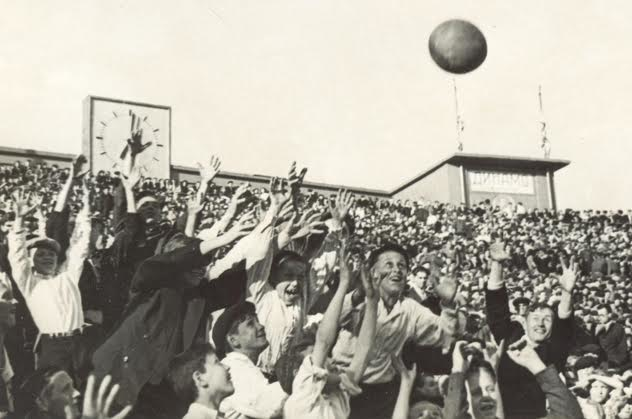Club history. 1923 – 1944

Dynamo foundation and early years
Many people believe that Soviet football dates from November 1917, but this assertion is not fully true. Until the end of the Civil War (autumn of 1922), the political leaders of the young state could not even think about the development of physical education and sports.
But did they play football in that era in principle? Of course, they did. In Moscow, the city championship was held, in which different clubs took part. These teams had been created at the beginning of the XXth century. And only in the autumn of 1922, the new authorities of the capital ordered to close the «bourgeois sports clubs» and transfer their property to newly-founded sports clubs related to the working and Komsomol youth.
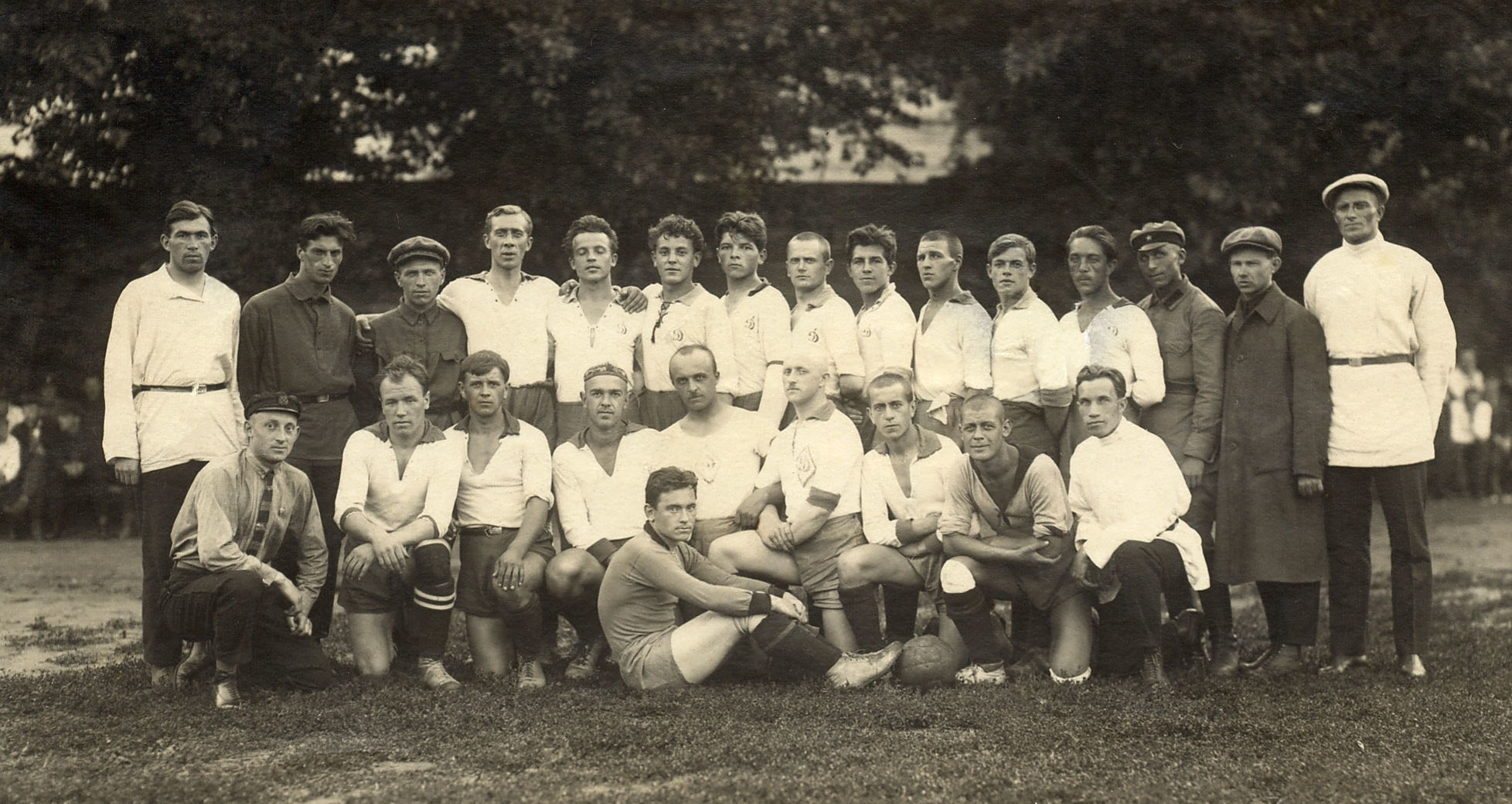
1920s. Anonymous author.
Thus, the Dynamo Moscow Proletarian sports society, founded in the spring of 1923, became the first association of that kind in the entire USSR. The idea of its creation was voiced by Pavel Uralets (deputy head of the political secretariat of the SPD troops based in the Moscow District) among his fellows in the winter. The constituent assembly that was held on April 18, became Dynamo's official birthday. At the same time, the main attributes of the society had been approved: white-blue colors of the playing kit, flag and diamond-shaped sign.
With enthusiasm, SPD servicemen took up the creation of sports sections, including the football one. It was necessary to create a team as soon as possible, and the recruitment of players was entrusted to a serviceman Fedor Chulkov, who had previously played in goal of the disbanded Sokolniki football club. At his invitation, all the former players of the Sokolniki football club gathered in the spacious house of brothers Ivan and Peter Ovechkin, where they took part in a tea party and decided not to give up and join Dynamo.
As explained above, the squad was fully formed of players, who had previously performed for the disbanded football club. That's why Dynamo played the first official match in the black and white kit of Sokolniki FC.
Dynamo first stadiums
The members of the Society began to think about building their own sports ground. Back in the spring, they found a littered wasteland in Orlovo-Davydovsky lane near the Rizhsky railway station. Enthusiasts started working in the evenings after service and workday: they used picks and shovels putting the site in order, and by August the ground was ready. A football pitch was narrowish, without a single blade of grass, but long and smooth. It was flanked by two or three rows of wooden benches dug into the ground.
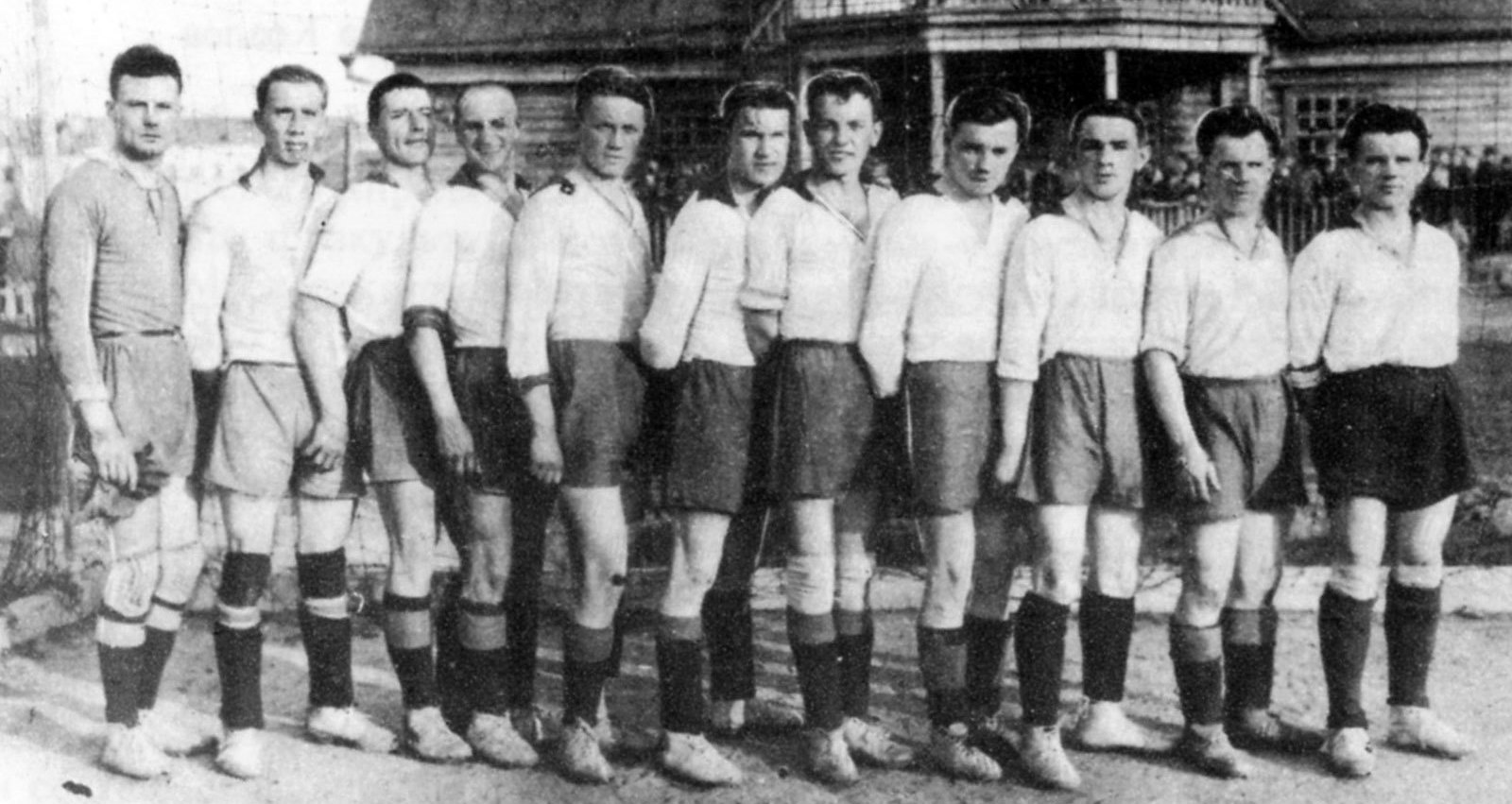
Dynamo-1926: Chulkov F., Lebedev P., Sokolov M., Karpenko N., Makarov A., Blinkov K., Ivanov S., Filippov I., Maslov D., Lenchikov I., Gruzinskiy D.
This ground served the Dynamo team until August 1928. Then, in the shortest possible time, the first large stadium in Moscow and the whole Soviet Union was constructed in Petrovsky Park (in the northern part of the city) for the All-Union Spartakiad.
Since that time, Dynamo Central Stadium has become home to generations of Dynamo athletes for 80 years, until 2008. The arena hosted different competitions of the highest rank all year round, and before the construction of the Luzhniki Stadium in 1956, it remained the main ground in the country. Dynamo stadium also hosted the games of the world championships in various sports, as well as 1980 Olympics football matches. The most significant sporting events gathered a 70-thousand crowd in the stands.
Dynamo power — in attack
In the first years of existence Dynamo didn't have proper prospects in their squad. But over time club's own trainees appeared inside the sports society. This fact is explained by the creation (since 1935) of the Young Dynamo football school, which gave an impulse to an increasing number of young men, who got initial football preparation.
During the early days of Soviet football, the tactics was practically ignored, and the main role was given to technically gifted players. Therefore, the skill of the forwards, their ability to receive and handle the ball, to hit the goal hard and accurately came to the fore.
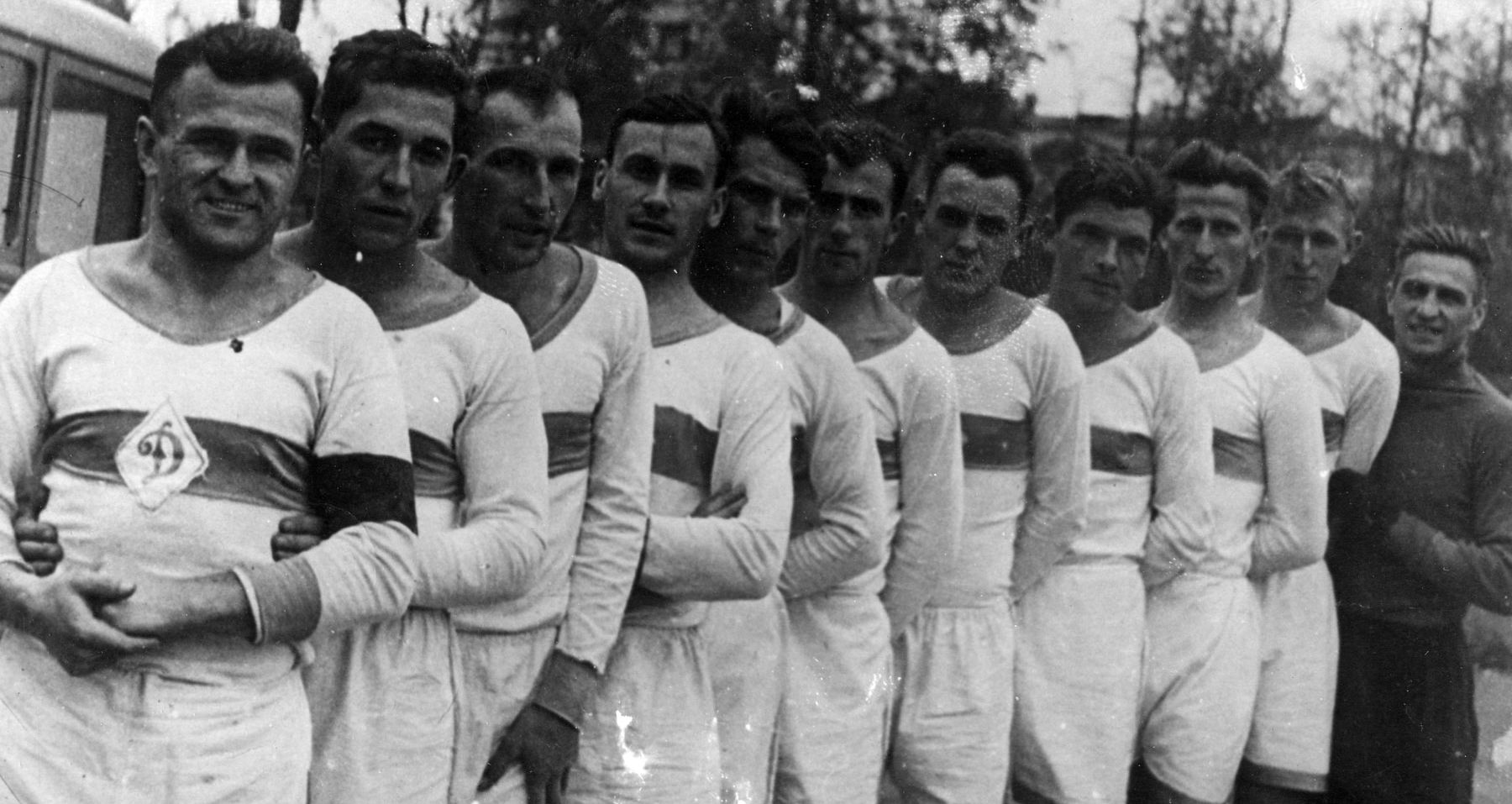
Dynamo — USSR first champion, 1936.
In the second half of the 20s, Dynamo insides Sergey Ivanov and Vasily Pavlov started shining. The number of goals scored by both masters was equal to matches they played for the team. Another bright personality — left winger Valentin Prokofiev — impressed the stands with an amazing speed run and absolute unpredictability of actions with and without the ball. In the first half of the 30s, the centre-forward Vasily Smirnov, who had a mighty strike, became a real nightmare to the goalkeepers of opposing teams.
When the USSR championships among teams representing Voluntary Sports Societies and security departments started being held, inside Mikhail Yakushin, left winger Sergey Ilyin and right winger Mikhail Semichastny made their names at Dynamo.
1940 is the debut season for another striker, Sergey Solovyov, who still remains the best scorer in Dynamo history.
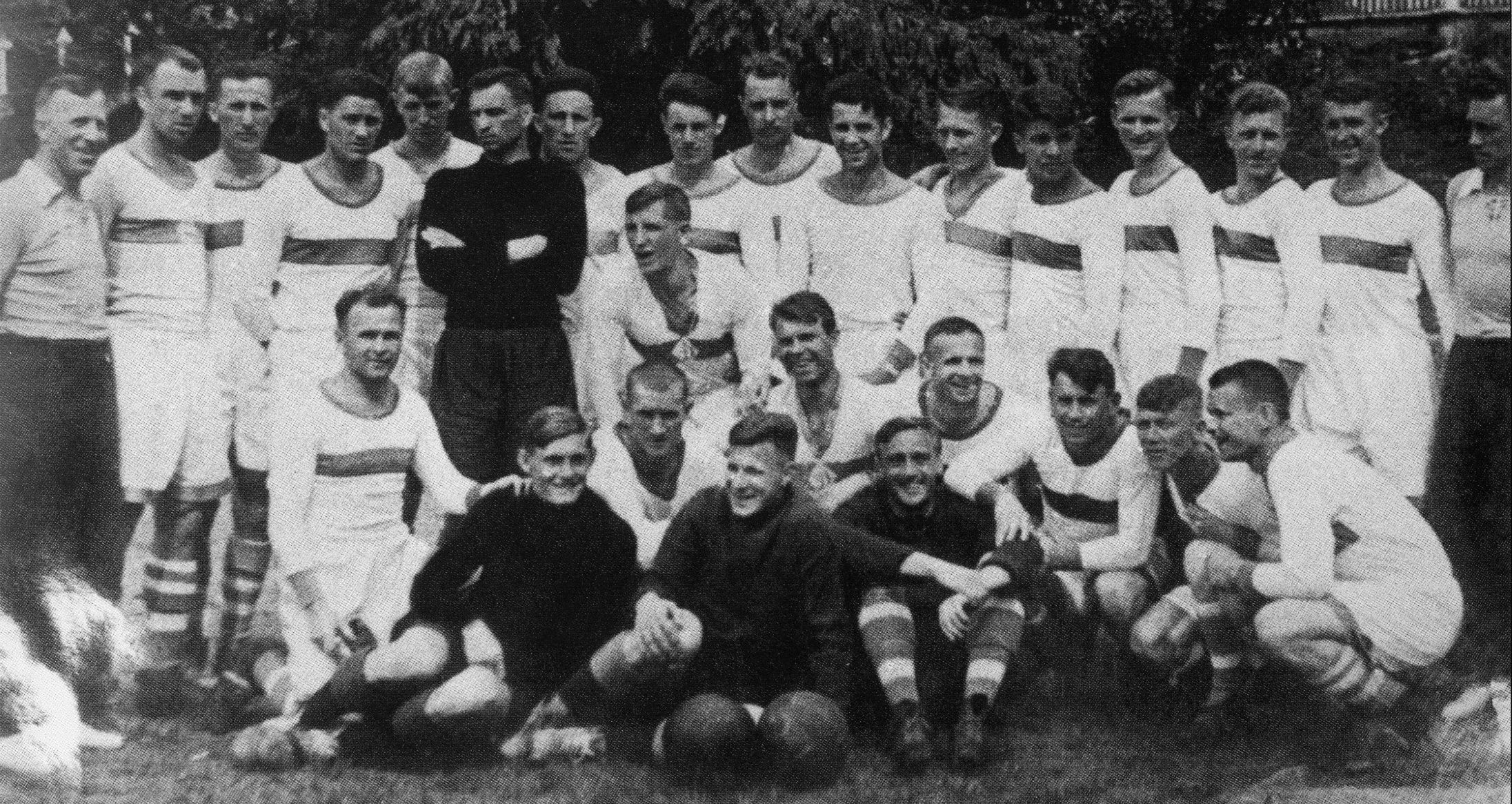
Dynamo training camp in Gagra, 1941.
Dynamo tactics
In the early days of Soviet football, tactics was not given as much attention as later. The teams positioned the players «five in a line», where the five attackers were located in parallel with the goal line and had to attack by moving the ball. Breakthrough of the insides down their wings was also encouraged. Then a cross followed into the penalty area. Behind the forwards there were three midfielders. The central midfielder was rightly considered the key man in the team. He carried full responsability and had to be in the thick of things, moving from goal to goal. Perhaps in those days the best footballer of that kind was Fedor Selin, who played at Dynamo from 1927 to 1935.
There were two defenders and a goalkeeper staying behind the midfielders. Thus, the attacking group prevailed numerically over the defense. This fact can logically explain high scoring in matches and relatively rare clean sheets among goalkeepers.
The Basque national team visited the USSR in 1937 and helped to make a revolution in tactics of Soviet football. Dynamo faced the Basques twice (being defeated by 1:2 and 4:7), and the advantage of the W system used by the visitors turned out to be obvious.
Some Soviet sides (Spartak Moscow, Torpedo Moscow and Tractor Stalingrad) changed their game system quickly. Dynamo decided to wait, because the previous tactics brought results. When two unsuccessful seasons followed, in 1940, Dynamo completely renewed their game formation.
The White-Blues' manager Boris Arkadiev showed his talent by adapting the new system. Having recognized the W advantages, he put the central midfielder with both insides deeper and advanced two wingers with a centre-forward. However, the gifted coach went even further. Boris Andreevich taught his team to use an «organized disorder» — the player in possession of the ball was not a key man at the time of the attack, but his teammates, who constantly moved in search of a position. The opposing defense was often unable to keep track of the passing direction.
Dynamo players in national teams
In July 1923, despite the young age of Dynamo, the team's inside Nikolay Troitsky joined the Moscow national team to friendly matches in Kharkov. There he took part in all three encounters and scored a goal in his debut game.
Dynamo player debuted for the national team in 1926, when the Soviet national team went on the road to Germany. The 29-year-old midfielder Konstantin Blinkov participated in three matches of this tour. His debut turned out to be phenomenal: he netted four goals in each of the first two games.
It should be noted that the level of national teams remained poor in those years: for example, the Germans fielded amateur work teams for friendly matches. The Soviet national team played its last games before the World War II in Turkey in 1935 having eight Dynamo footballers in the squad.
